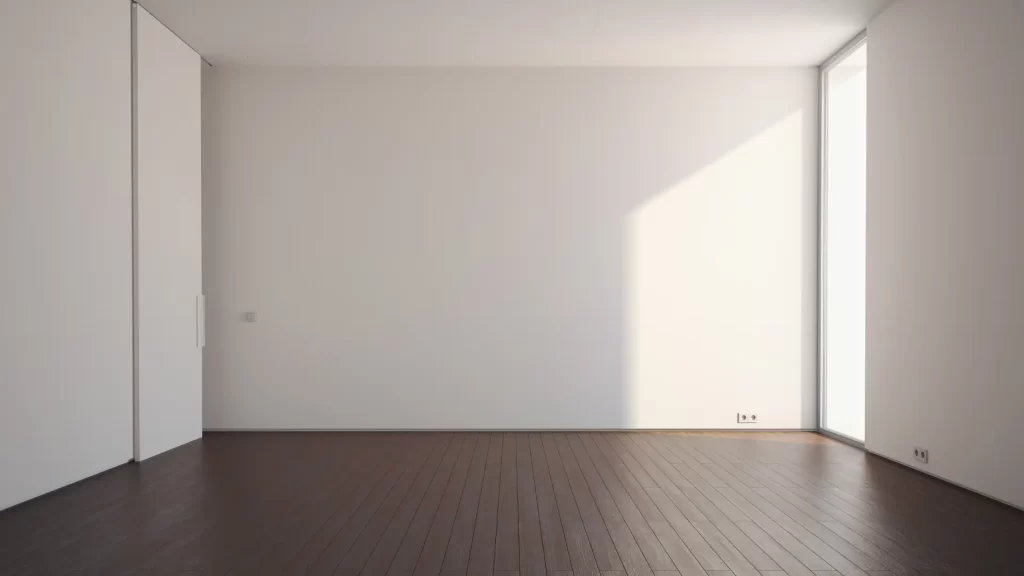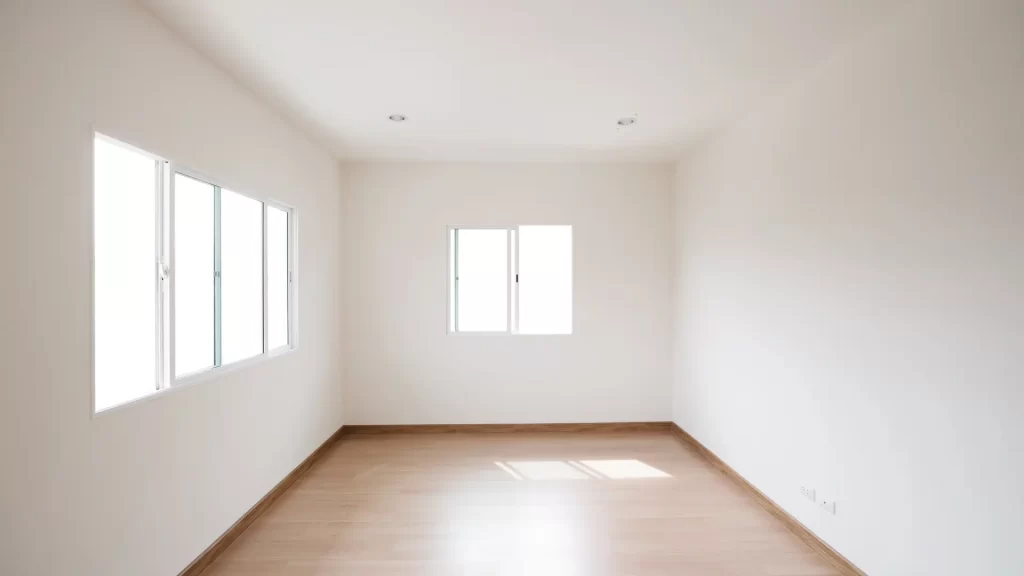Welcome to our post on using color to maximize a small bedroom. Your bedroom is a personal sanctuary where you unwind and recharge after a long day. However, designing a small bedroom can be a challenge, and it can be challenging to find ways to make the most of the limited space available. The right color can make all the difference in creating a sense of openness and relaxation, even in the smallest of bedrooms. In this post, we will share tips and tricks for using color to create a beautiful and spacious-feeling bedroom.
Understanding the psychology of colors
Understanding the psychology of colors is essential when designing the interior of a small bedroom. Different colors have the power to evoke specific emotions and moods. For example, warm colors like red, orange, and yellow create a sense of coziness and intimacy, while cool colors like blue, green, and purple promote calmness and relaxation. Neutrals like beige, gray, and white are versatile and can create a sense of spaciousness. By understanding the psychology of colors, you can choose the right hues to create a specific atmosphere in your small bedroom.
Choosing the right color scheme for a small bedroom
Choosing the right color scheme for a small bedroom is crucial to create a comfortable and visually appealing space. The right colors can make a small bedroom feel more spacious, cozy, and relaxing. When choosing a color scheme, consider the mood you want to create and the size and layout of the room.
One effective technique is to choose a light, neutral color as the base color for the walls and ceiling. Light colors such as white, beige, or pale gray will reflect natural light and create an airy feel. Neutral colors also provide a versatile backdrop for different accent colors and furniture styles.
Accent colors can be used to add interest and personality to the room. Bold and vibrant colors can be used sparingly for a pop of color on a single wall or in accessories such as pillows or curtains. Soft pastels or muted colors such as dusty rose or olive green can create a calming atmosphere and make the room feel cozier.
It’s also important to consider the undertones of the colors you choose. Cool colors such as blue or green have a calming effect and work well in small bedrooms with ample natural light. Warm colors such as orange or red can make a small space feel more intimate and cozy, but they should be used sparingly to avoid overwhelming the room.
Light vs. Dark Colors: Pros and Cons
When it comes to choosing the right color scheme for a small bedroom, the debate between light and dark colors can be never-ending. Here are some pros and cons to consider:
Pros of Light Colors:
- Light colors make the room feel more spacious and airy.
- They reflect natural light better and brighten up the space.
- They provide a sense of calm and relaxation, making it easier to fall asleep.
Cons of Light Colors:
- Light colors can be more prone to showing dirt and stains, requiring more frequent cleaning.
- They can feel cold and sterile, especially if the room lacks natural light.
- They can be boring and lack personality if not paired with the right accents.
Pros of Dark Colors:
- Dark colors add depth and dimension to a small room, making it feel more cozy and intimate.
- They create a dramatic and luxurious atmosphere, perfect for a master bedroom.
- They hide imperfections and stains better than light colors.
Cons of Dark Colors:
- They can make the room feel smaller and more cramped.
- They absorb natural light, making the space feel darker and gloomier.
- They can be overwhelming if not balanced with the right accents and lighting.
Ultimately, the decision between light and dark colors comes down to personal preference and the overall aesthetic you want to achieve in your small bedroom. A good tip is to use light colors as a base and add pops of darker shades through accessories and accent walls to create contrast and interest.

Using Accent Colors to Create Visual Interest
When it comes to choosing a color scheme for a small bedroom, accent colors can play a crucial role in creating visual interest. Accent colors are used sparingly to add a pop of color or highlight a particular feature in the room. They can be used on the walls, bedding, curtains, or even in accessories like throw pillows and lamps.
When selecting an accent color, consider the primary color scheme and choose a hue that complements it. For example, if the primary color scheme is blue and white, a complementary accent color might be a warm yellow or coral. These colors will add warmth and depth to the space without overpowering the primary color scheme.
Another way to incorporate accent colors is by using patterns. Patterned bedding, curtains, or rugs can introduce accent colors in a subtle and sophisticated way. For instance, a striped or floral duvet cover can add visual interest to an otherwise simple bedding set.
Keep in mind that when it comes to accent colors, less is often more. Using too many accent colors can make the room feel cluttered and overwhelming. Stick to one or two accent colors and use them strategically to create a cohesive and visually appealing bedroom.
Creating a Cozy Atmosphere with Warm Colors
Creating a cozy and welcoming atmosphere in a small bedroom can be achieved by incorporating warm colors in the color scheme. Warm colors such as red, orange, and yellow, have the ability to create a sense of intimacy and comfort in a room. They can also make a small space appear larger by visually expanding the walls.
When using warm colors, it is important to balance them with neutral colors such as beige or white to avoid overwhelming the space. One way to incorporate warm colors into a small bedroom is by painting an accent wall with a warm hue, while keeping the rest of the walls neutral. Another option is to incorporate warm colors through bedding, curtains, or decorative accessories.
It’s important to note that warm colors may not be suitable for everyone’s taste or preference, so it’s important to choose a color scheme that matches your personal style and creates a space where you feel comfortable and relaxed.
Creating a Calming Retreat with Cool Colors
Cool colors such as blues, greens, and purples can create a calming and relaxing atmosphere in a small bedroom. These colors have a soothing effect on the mind and can help reduce stress and anxiety. They also give the impression of a cooler environment, which can be particularly beneficial in the hot summer months.
One popular option is to use shades of blue, such as baby blue, sky blue, or navy blue. Blue is known for its calming properties and can help lower blood pressure and heart rate. It’s also associated with tranquility and peace, making it a perfect color for a restful bedroom.
Another option is to use shades of green, such as mint green, sage green, or olive green. Green is associated with nature and can create a relaxing and rejuvenating atmosphere in the bedroom. It’s also believed to help with concentration and focus, which can be beneficial for those who use their bedroom as a workspace.
Lastly, shades of purple, such as lavender, lilac, or violet, can also create a calming effect in the bedroom. Purple is associated with spirituality and can create a sense of luxury and elegance in a small bedroom.
When using cool colors in a small bedroom, it’s important to balance them with warm colors or neutral tones to avoid creating a space that feels too cold or sterile. Adding warm wood tones, metallic accents, or touches of yellow, orange, or red can help create a cozy and inviting atmosphere.
Using Neutral Colors to Expand the Space
Neutral colors such as white, beige, gray, and taupe can make a small bedroom feel larger and more open. These colors are a safe choice and create a serene, calming atmosphere. Lighter shades of neutral colors reflect more light, making the space feel brighter and more spacious.
To add depth and texture, layer different shades of neutral colors, such as using a white bedspread with beige or taupe throw pillows. Another way to add interest is to use various textures, like a shag rug or a woven throw blanket. Neutral colors also provide a great backdrop for art and decorations, allowing them to stand out without overwhelming the space.
Matching Colors to Bedroom Furniture and Decor
When selecting a color scheme for a small bedroom, it’s essential to consider the existing bedroom furniture and decor. It’s essential to create a cohesive look that balances well with the furniture and decor to make the space feel unified. The color scheme should complement the furniture and not clash with it.
If the bedroom furniture is neutral or white, it’s a great opportunity to introduce pops of color through bedding, curtains, and accent pieces. However, if the furniture has a specific color or finish, it’s crucial to choose a complementary color scheme that doesn’t clash with it.
Additionally, patterns and textures in bedding and decor can provide an opportunity to add visual interest and depth to the space. A neutral color scheme can work well with patterned bedding, while a bold color scheme may benefit from more subtle texture and pattern accents.
When choosing colors for a small bedroom, it’s also essential to consider the mood and ambiance that the colors create. The overall goal is to make the bedroom feel like a relaxing retreat, so choosing calming colors like blues and greens can help achieve this. On the other hand, warm colors like reds and oranges can create a cozy and welcoming atmosphere.
In conclusion, matching colors to bedroom furniture and decor is an important aspect of creating a color scheme for a small bedroom. It’s essential to choose a color scheme that complements the existing furniture and decor, adds visual interest through patterns and textures, and creates the desired mood and atmosphere.
Painting Techniques to Enhance the Perception of Space
Painting techniques can also help to enhance the perception of space in a small bedroom. For example, using a technique called color blocking can help to visually divide the space and make it appear larger. Color blocking involves painting different sections of the wall in contrasting colors. For instance, you can paint the bottom half of the wall in a dark color and the top half in a light color, or paint one accent wall in a bright color while leaving the others neutral.
Another painting technique that can help to create an illusion of space is painting the ceiling the same color as the walls. This technique creates a seamless look that makes the walls appear taller and the room larger. Alternatively, painting the ceiling a light color while keeping the walls dark or neutral can make the ceiling appear higher and the room more spacious.
Finally, painting the trim and molding in a contrasting color can add depth and dimension to a small bedroom. For example, painting the trim and molding a lighter color than the walls can make them appear farther away, creating the illusion of more space.

In conclusion, choosing the right colors for a small bedroom can have a significant impact on its overall look and feel. By considering the psychology of colors, selecting the appropriate color scheme, and using accent colors and painting techniques, you can make your small bedroom feel cozy, spacious, and inviting. Remember to consider the existing furniture and decor in your bedroom when selecting a color palette. With these tips and tricks, you can transform your small bedroom into a beautiful and functional space.
Looking to preserve your family memories? Check out our post on “10 Tips for Cleaning Up Old Family Pictures and Preserving Memories“.



